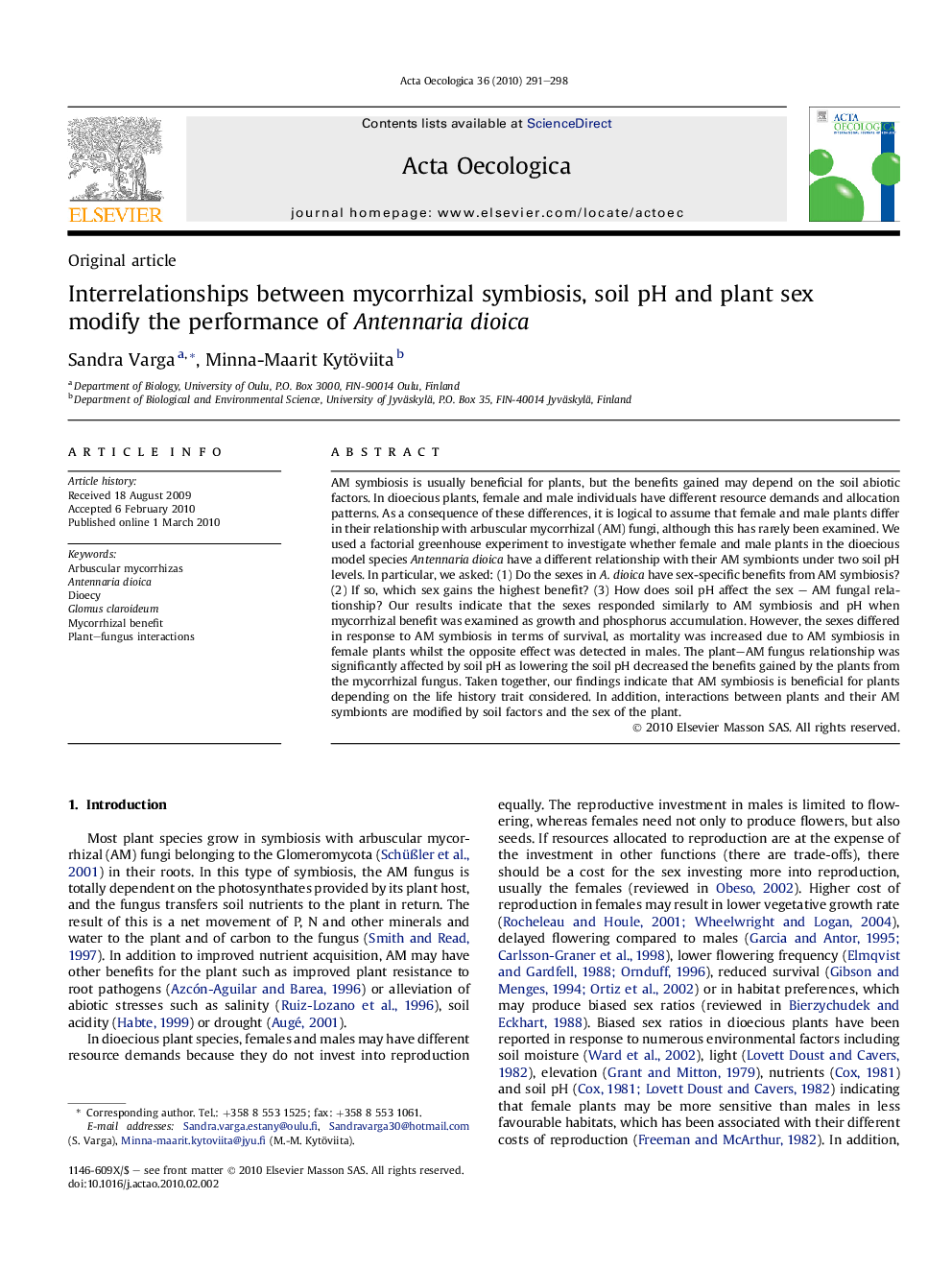| Article ID | Journal | Published Year | Pages | File Type |
|---|---|---|---|---|
| 4381329 | Acta Oecologica | 2010 | 8 Pages |
Abstract
AM symbiosis is usually beneficial for plants, but the benefits gained may depend on the soil abiotic factors. In dioecious plants, female and male individuals have different resource demands and allocation patterns. As a consequence of these differences, it is logical to assume that female and male plants differ in their relationship with arbuscular mycorrhizal (AM) fungi, although this has rarely been examined. We used a factorial greenhouse experiment to investigate whether female and male plants in the dioecious model species Antennaria dioica have a different relationship with their AM symbionts under two soil pH levels. In particular, we asked: (1) Do the sexes in A. dioica have sex-specific benefits from AM symbiosis? (2) If so, which sex gains the highest benefit? (3) How does soil pH affect the sex - AM fungal relationship? Our results indicate that the sexes responded similarly to AM symbiosis and pH when mycorrhizal benefit was examined as growth and phosphorus accumulation. However, the sexes differed in response to AM symbiosis in terms of survival, as mortality was increased due to AM symbiosis in female plants whilst the opposite effect was detected in males. The plant-AM fungus relationship was significantly affected by soil pH as lowering the soil pH decreased the benefits gained by the plants from the mycorrhizal fungus. Taken together, our findings indicate that AM symbiosis is beneficial for plants depending on the life history trait considered. In addition, interactions between plants and their AM symbionts are modified by soil factors and the sex of the plant.
Keywords
Related Topics
Life Sciences
Agricultural and Biological Sciences
Ecology, Evolution, Behavior and Systematics
Authors
Sandra Varga, Minna-Maarit Kytöviita,
